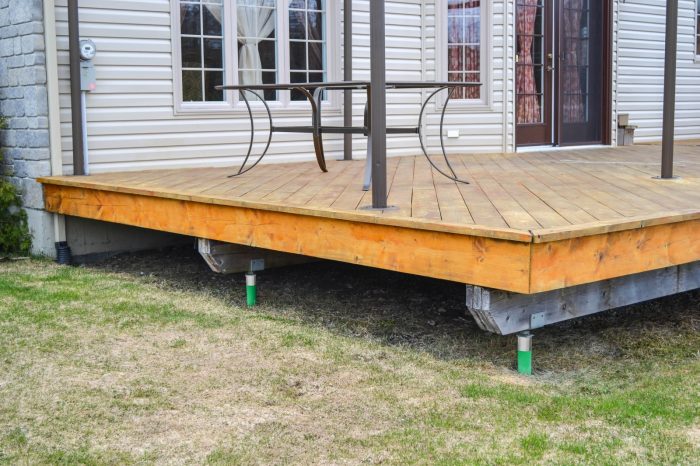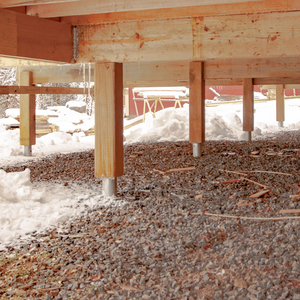
A GBA reader named Matt2021 is mapping out plans for a new, L-shaped deck to be built a couple of feet over a slightly sloped site. Rather than excavating for concrete footings to support the structure, Matt is considering helical piers.
These hydraulically driven supports consist of a steel tube and a helical plate, and placing them requires no excavation or concrete work. Matt likes the idea of using them because they’re easier to install and not much more expensive than conventional concrete footings and piers, and they would be better environmentally.
But he’s hit a snag.
“Someone told me that calculating the load capacity for each pier would be easy,” Matt writes in this recent Q&A post. “Yet, I am having truly a hard time. All the calculators I find assume that I’ll be using concrete footings.”
He’s been told that the helical pier company will install the pier for any load capacity the customer requests. If that’s the case, can’t he just ask for a higher capacity than his calculations suggest, thereby adding a comfortable safety margin?
Any tips? he asks. That’s the topic for this Q&A Spotlight.
Bearing capacity related to torque
DCContrarian explains that the bearing capacity of the installed pier is related to the torque needed to drive it into the ground.
“The way piers work is you tell the installer what load you need and they drive them in to that load,” he says. “The theory is that the torque needed to drive them is directly proportional to the load the pier can support. They use a hydraulic driver that is set to release at specified torque. So they dial in the setting and drive until it releases.”
The pier itself, he adds,…
Weekly Newsletter
Get building science and energy efficiency advice, plus special offers, in your inbox.

This article is only available to GBA Prime Members
Sign up for a free trial and get instant access to this article as well as GBA’s complete library of premium articles and construction details.
Start Free TrialAlready a member? Log in













0 Comments
Log in or become a member to post a comment.
Sign up Log in